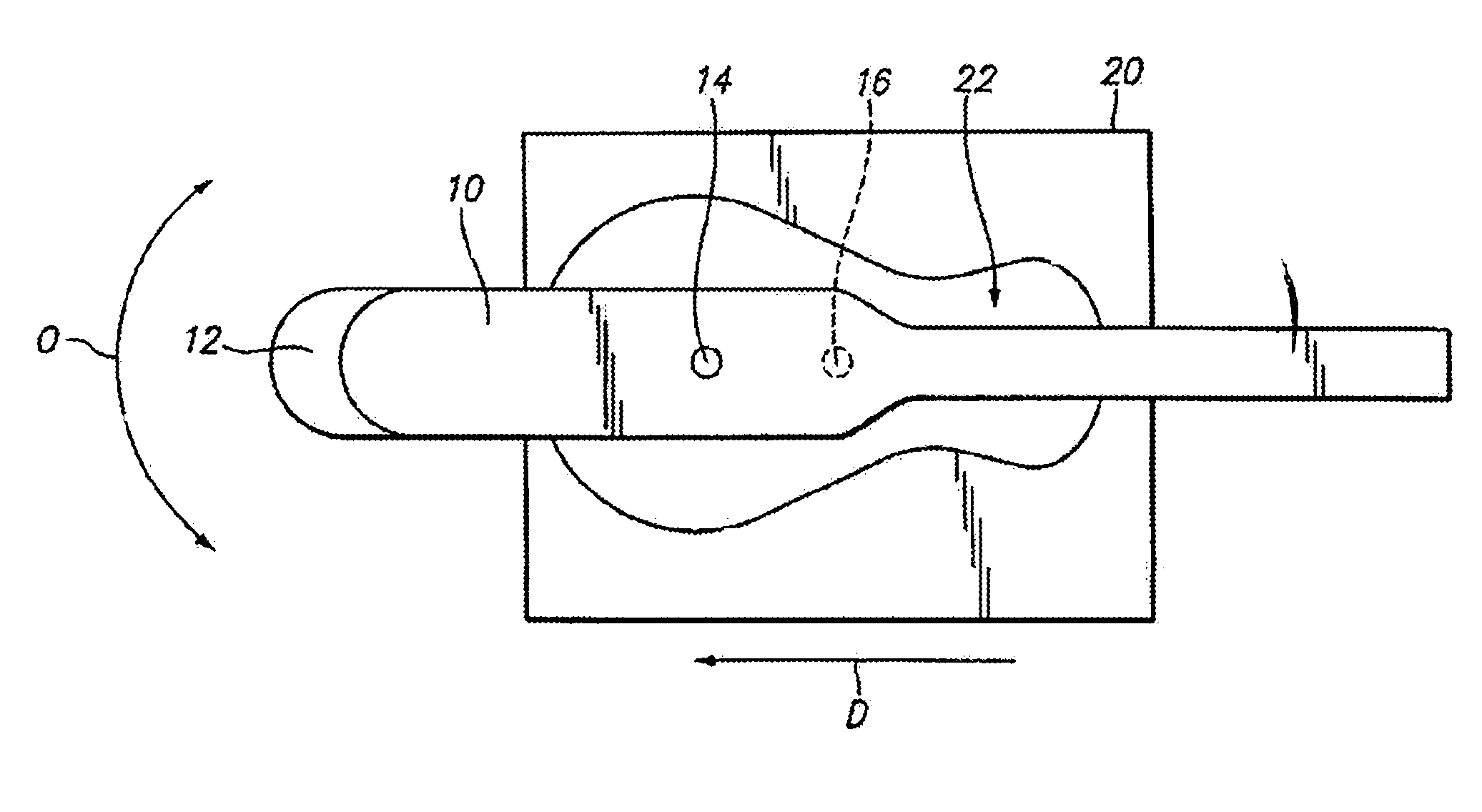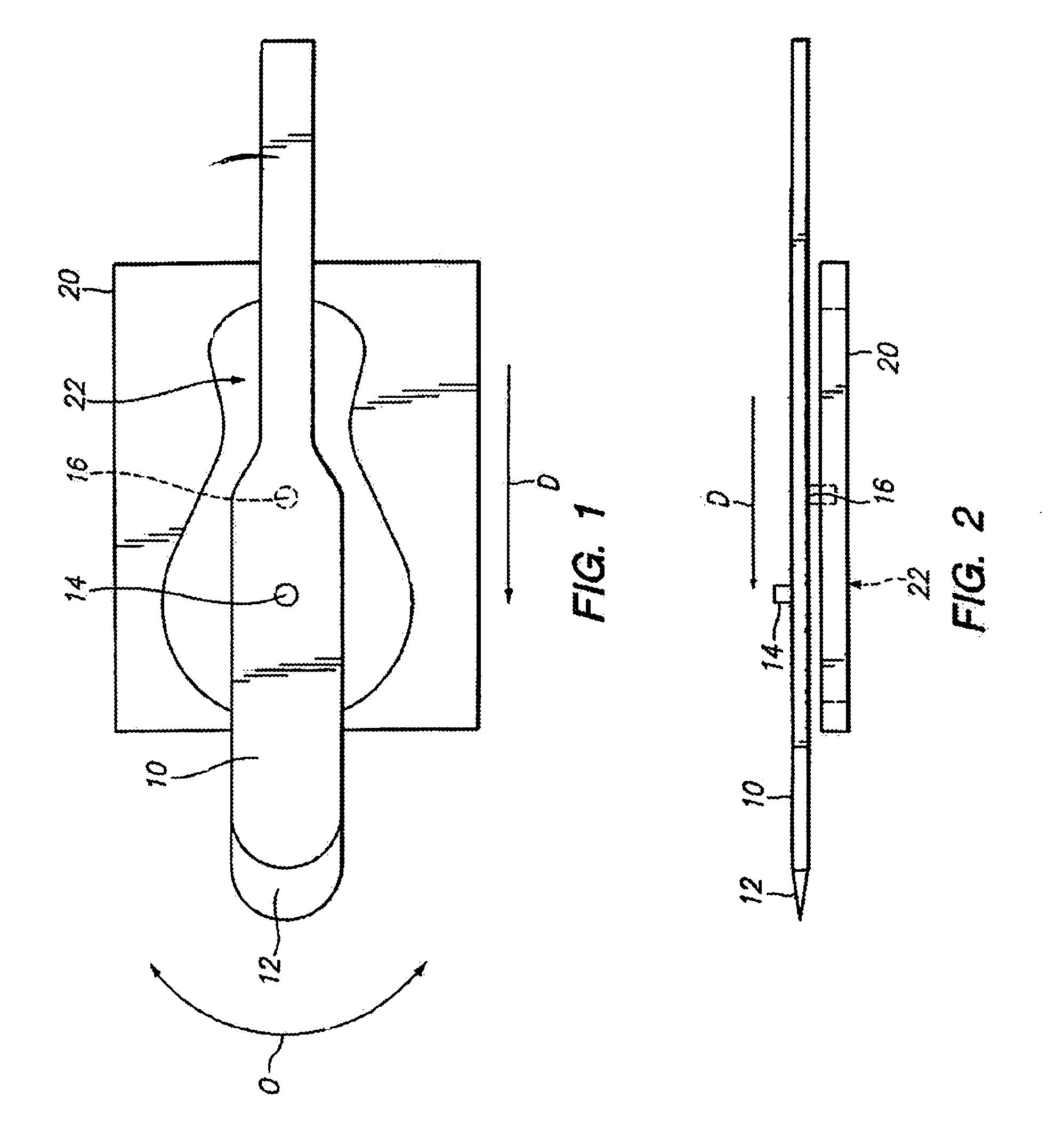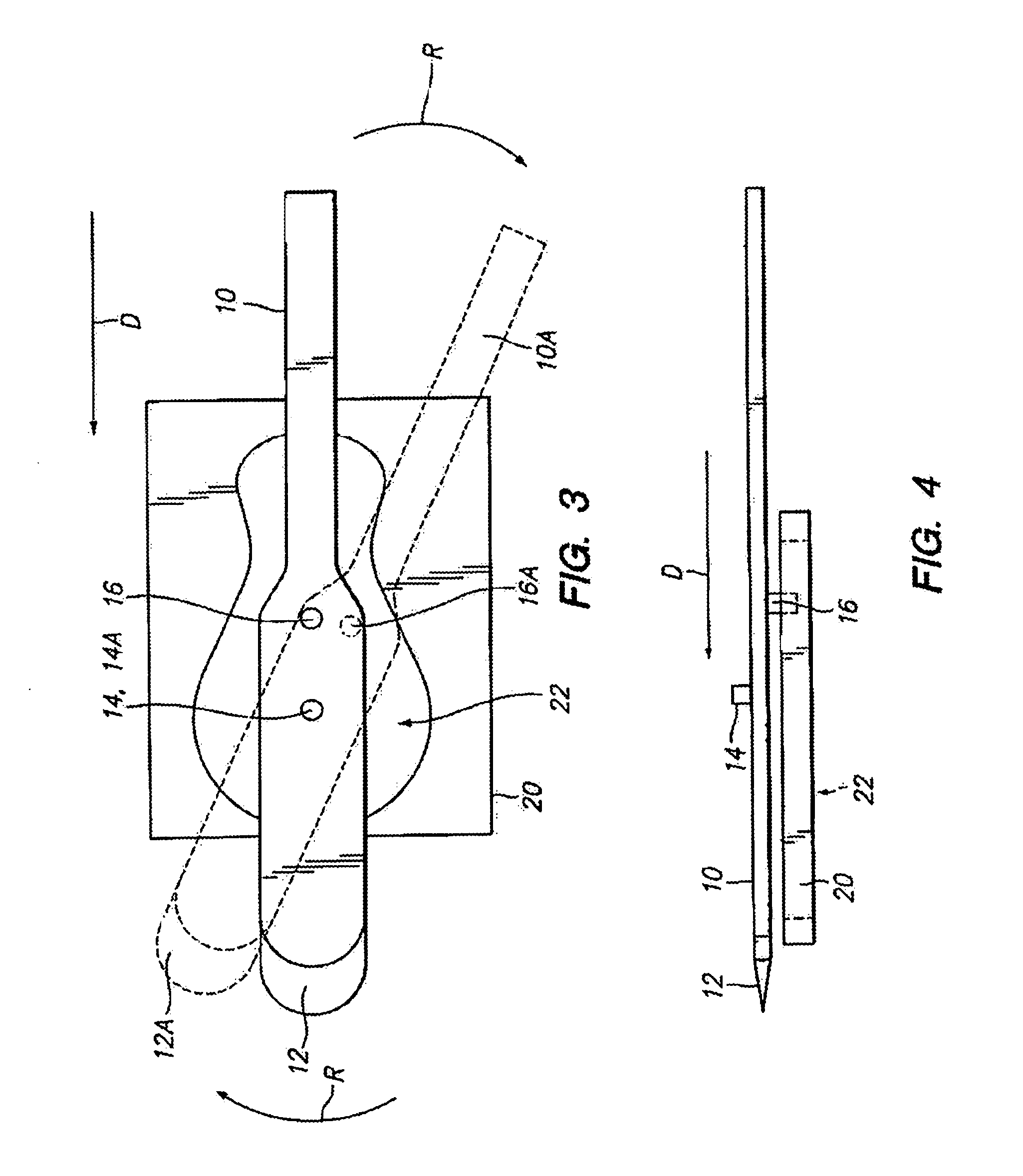System for cutting the cornea of an eye
a technology of corneal surgery and cutting device, which is applied in the field of surgical systems for cutting cornea of, can solve the problems of loss of vision, and long recovery time of penetrating keratoplasty, and achieve the effect of reducing the risk of expulsive suprachoroidal hemorrhag
- Summary
- Abstract
- Description
- Claims
- Application Information
AI Technical Summary
Benefits of technology
Problems solved by technology
Method used
Image
Examples
Embodiment Construction
[0051]In preferred aspects, the present invention provides a corneal surgery system that can be used to cut a live or donor cornea to form a pocket, flap or cap by separating the layers of the cornea. Specifically, the present invention provides a system for automatically creating a pocket of uniform depth, which can be of various shapes and sizes, between the layers of a live or donor cornea. The present invention may also be used to create a flap or cap of corneal tissue in a live or donor cornea.
[0052]In accordance with the present invention, a system for cutting a cornea is provided. The system comprises a cutting blade that is moved back and forth in an arcuate path while simultaneously being advanced to cut through a cornea. As will be explained, the degree of angular movement of the cutting blade is limited by contacts between a moveable member (to which the cutting blade is attached) and a cutting guide.
(b) Components of the Present Invention
[0053]Operation of the present in...
PUM
 Login to View More
Login to View More Abstract
Description
Claims
Application Information
 Login to View More
Login to View More - R&D
- Intellectual Property
- Life Sciences
- Materials
- Tech Scout
- Unparalleled Data Quality
- Higher Quality Content
- 60% Fewer Hallucinations
Browse by: Latest US Patents, China's latest patents, Technical Efficacy Thesaurus, Application Domain, Technology Topic, Popular Technical Reports.
© 2025 PatSnap. All rights reserved.Legal|Privacy policy|Modern Slavery Act Transparency Statement|Sitemap|About US| Contact US: help@patsnap.com



